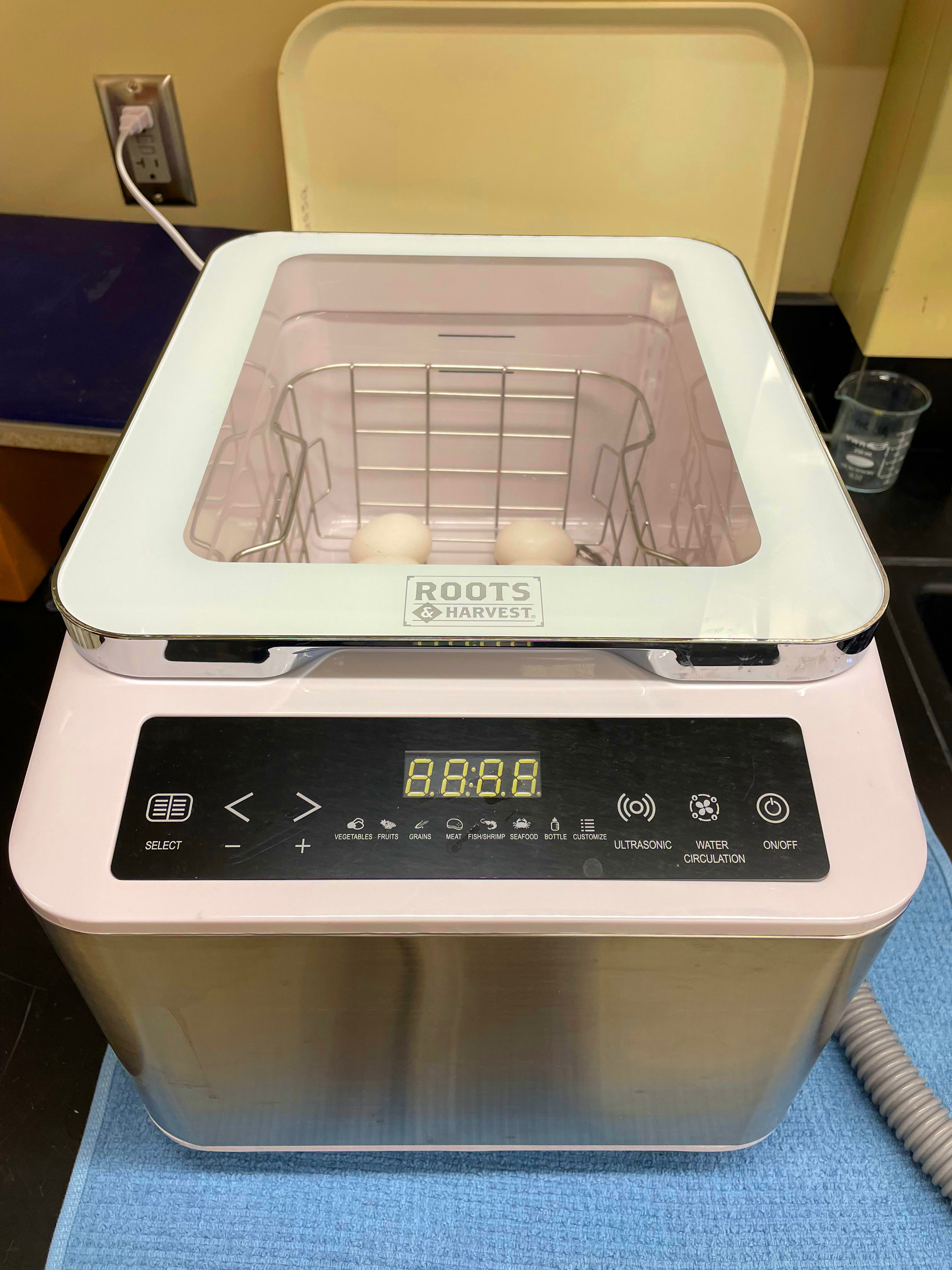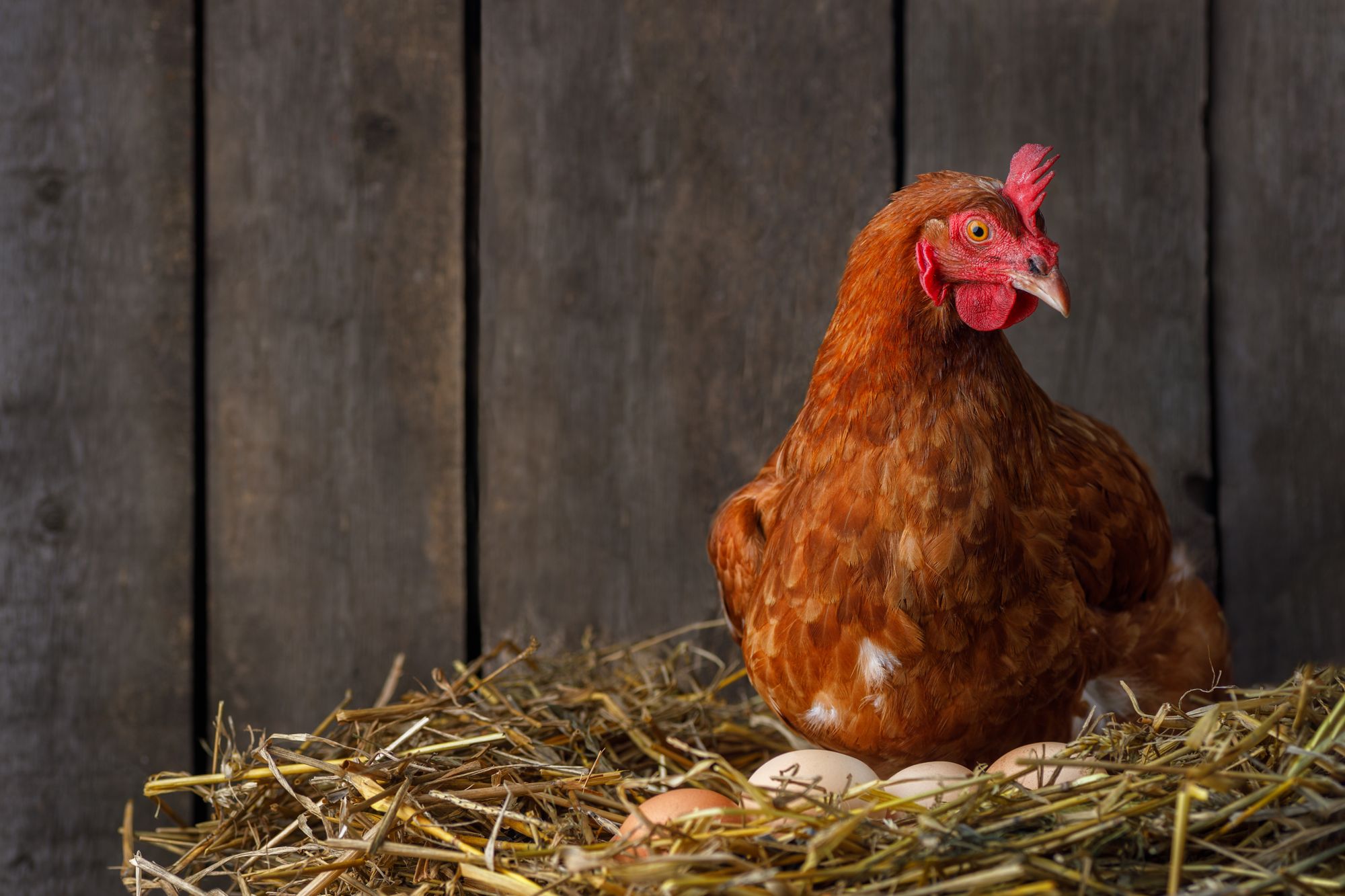Curing & Smoking Poultry Meat
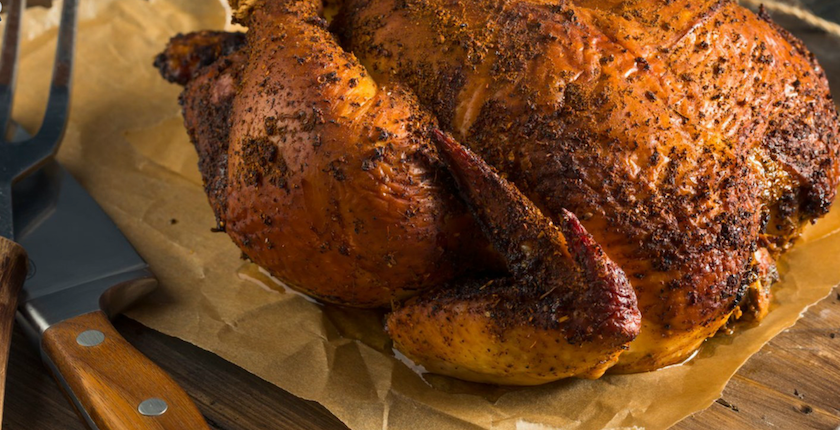

Tastes like chicken…only better
Have you ever been given the gift of a smoked bird? Some people say it is too much work, while others love the challenge of smoking their own poultry meat. A small, economical smoker for home use will range from $80 to $500, depending on the unit and its capacity. However, some folks even go so far as to build their own smokehouses!
Smoked meat is certainly a special treat for friends and family. It is a delightfully complex mixture of flavors that hit your tongue. If you have never had a chance to try a smoked bird, then I highly recommend that you try it.
Making it last, making it good
What goes into curing and smoking poultry meat? Curing and smoking was a way to give your meat a unique flavor and color. Curing has the added bonus of improving the meat’s food safety. Smoking has an antioxidant effect which also retards bacterial growth and can also kill many bacteria on the meat.
This is all meat science and it is far from boring. Why, there are dramas going on right, left, and center! You can think of it as the forces of evil (bacteria) trying to take away your delicious, hard-earned chicken not long after you have processed your birds. You, on the other hand, are the protagonist in this situation, using all kinds of tools in your arsenal (curing and smoking) so that you keep your fresh, wholesome poultry.
There are some people who worry about the curing agents and effects that smoking has on their health. Nitrates are a worry in some cured meats for people who may again be concerned with cancer, while others do not prefer the taste. Carcinogens can wind up on some smoked meats if certain spots get burned or scorched and so there are again concerns with cancer.
But on the flip side, what are the benefits of smoking meat? We are going to cover that topic in detail. Let’s delve into the world of meat science for a much better understanding.
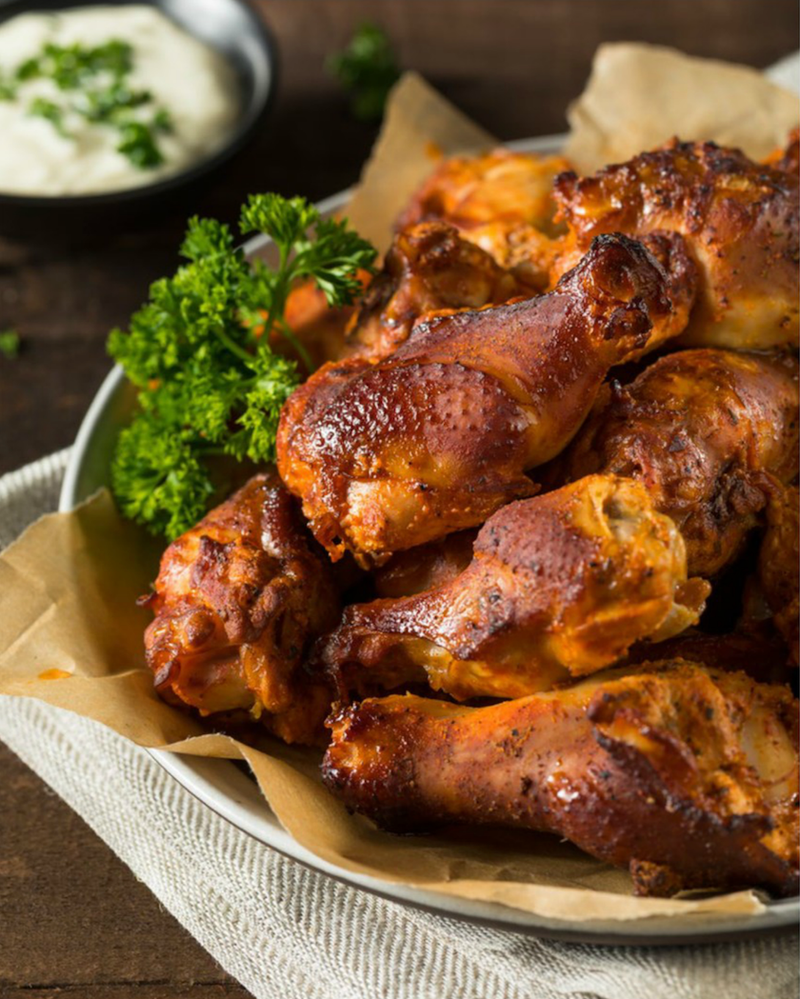
Curing Meat
If you think back to ancient times, curing consisted of using only salt. It was a way to preserve meat and make it last longer after the meat was harvested. Curing inhibited the bacteria that would otherwise have cause the meat to spoil.
When salt is on the surface or packed into the meat, we are also dehydrating the muscle cells at the meat surface. We call this process dry curing and often the salt that was used was impure. Salt had a reddish-brownish color and that color transferred to the meat being cured giving it a reddish appearance. It was soon discovered that that reddish-brown impurity was something specific and was given a name: Sodium nitrate.
Of course, there are always bacteria on the surface of meat, which is what causes it to spoil. As it turns out, we learned that dry curing breaks the salt down into into sodium nitrite by the action of bacteria on the surface of the meat. Sodium nitrite is also effective at preventing bacterial growth, but it is definitely a molecule on the go! It is often influenced by the action of the meat’s pH and so it is changed into nitrous acid. It does not stay in this form long and it degrades into nitrous oxide. Nitrous oxide has powerful bacteriostatic effects and can take on many challengers in the world of foodborne bacteria.
As with all things, though, the circumstances need to be just right—too much bacteria can overwhelm the curing agent, or if the smokehouse environment is not right, your process can end up incomplete.
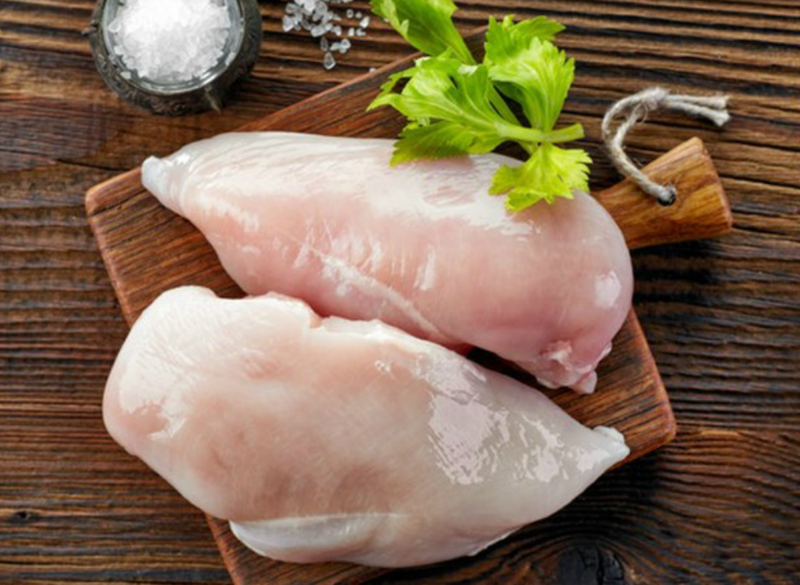
Sugar and spice and everything…else
What is the action of each component of a poultry meat cure? Of course, we talked about salt and that it acts as a preservative, but it also affects the flavor and texture of the meat. Sugar is sometimes used in some cures and it not only adds flavor, but it counteracts the drying and toughening that can occur with just salt.
Additionally, there are many different blends of spices, and you will need to find the ones that you enjoy the most. Some of those spices are known to have a mild effect on preventing growth of bacteria. Of course, then there are the nitrites and they change the color of the meat, but they also prevent and kill different kinds of bacteria. The hemoglobin in the meat reacts with the nitrites and forms a new compound which you see when you cut into the meat. Lots of people readily recognize a smoke ring in meat when they cut into a smoked product.
You can go beyond surface curing. Essentially, with a cure you are controlling the lipid oxidation process. You can take that curing agent and inject it into the meat itself with a needle and syringe. A large bore needle is what is needed and a larger syringe will help prevent any clogging due to large spices in your cure, if you are not using a liquid spice blend. A larger syringe will also keep you from having to refill as often.
Marinating a cure?
Curing and marinating meat are not exactly the same. In fact they developed separately from one another. They share many of the same actions, though. They both act by delivering their components to the liquid portion of the meat tissue.
Marinades were developed mostly in the culinary field whereas cures come more from the meat preservation side
An older, but very simple salt curing recipe would be six pounds of salt, three pounds of sugar and two ounces of saltpeter. You can add different oils like sage, thyme, or marjoram to add distinct flavors. All of this should be in a solution of about five gallons of water. Other options for a cure would be to include oils of cardamom, coriander, sweet basil, bay leaf, parsley, celery or black pepper. You could even switch out the sugar for light brown sugar for a whole new taste.
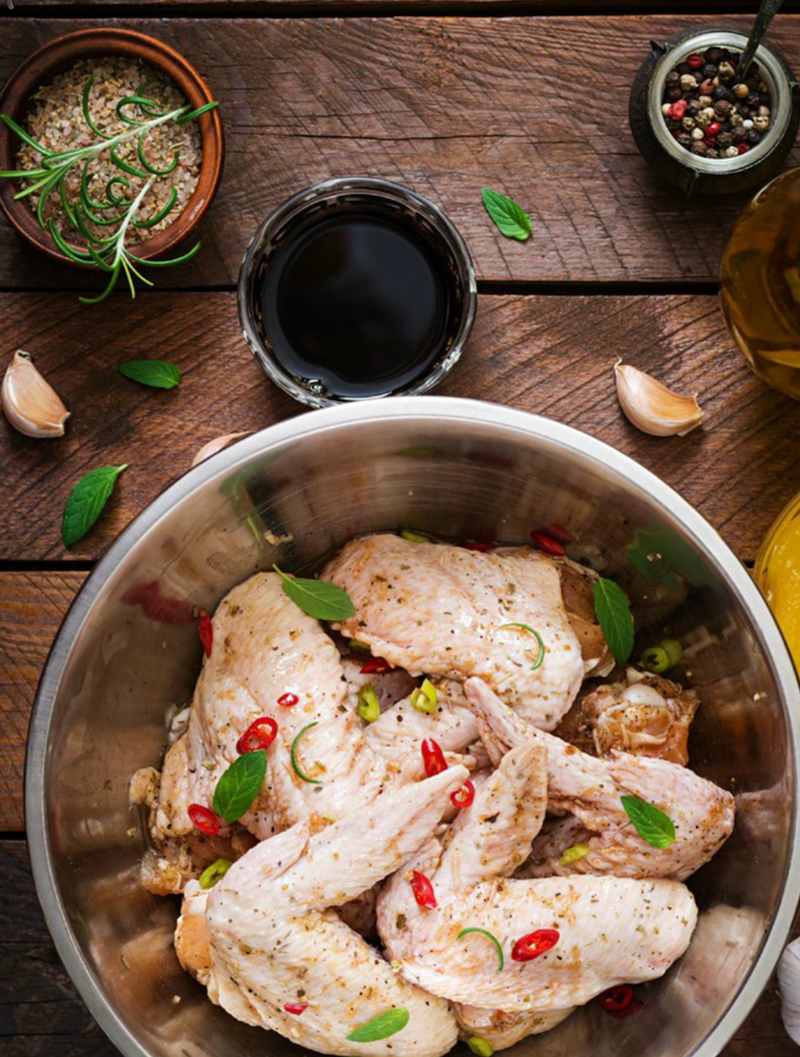
Smoking Meat
When wood is burned slowly, you get a number of different compounds as a result. The smoke from the type of wood you choose imparts a particular flavor to your meat. Many agree that hardwoods are the best for use in this process, but it is up to you to explore which woods give you the effect that you find the most pleasing to the palate. Some examples of commonly used woods for smoking are hickory, cherry, alder, or mesquite.
Smoking is essentially the controlled oxidation and combustion of wood. In this process, phenols are your friends. They are the main component in the smoking process that have an antioxidant effect on the meat. You also have some formaldehyde that results from the smoking process and that, too, is a powerful and effective bacteria fighter.
The color of your poultry meat will change with smoking and you can influence this by varying the time, temperature, and smoke density in the smoker or smokehouse. You also need to control the humidity. You may have noticed that when you bake bread, you get a browning effect at the surface—the crust. This is called the Maillard reaction and it happens in smoked meat, too. In smoked poultry meat you are getting reactions between free amino groups from proteins and the nitrogenous compounds and carbonyls found in smoke.
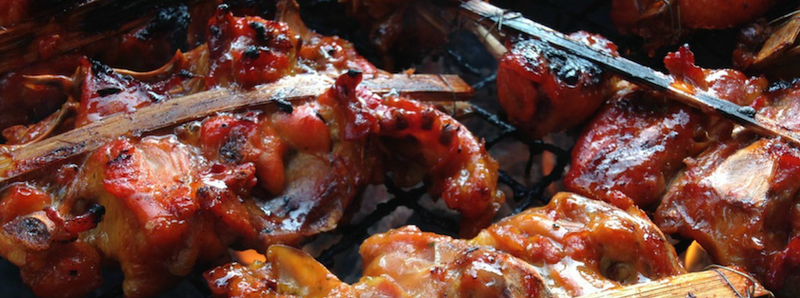
A balancing act
You have two temperatures at play: the product surface temperature and the core temperature. You want to increase the humidity in the early stages of heating because it will increase the cooler product’s surface temperature by condensation. Doing so increases the difference between the temperature at the core and the surface of the product.
Later on in the smoking you want less humidity and more heat. This is going to cause moisture to migrate out of the product and onto the surface where it evaporates off. This causes shrinkage, but this drying effect is what you want for a smoked product.
Choosing your bird for minimal shrinkage
You will want to use a well-fleshed bird and a clean carcass with not many tears in the flesh. If your chickens are too fat, then you will see a high rate of shrinkage during smoking. If you are using a breed that is not well-fleshed—a heritage breed rather than a broiler, for example—then you will have meat that is more dry, tough, and stingy. Giblets are not usually smoked. You may choose to trim the wingtips from the carcass and it is up to you if you want to trim off the neck skin or leave it on. Some people will tuck the wingtips into the neck skin as a way of keeping the wingtips from scorching.
You typically want a carcass that is over three pounds. If you use an older bird, the meat will not be as tender and you are going to see a high level of moisture loss. The same goes for a lighter bird, such as a young broiler (Cornish game hen). If you are going to smoke a turkey, be sure that it is less than two years old.
Trying tasty delights
We have come a long way since the time of just curing with salt. It is a good way to spend more time with your family and children to help them learn where their food comes from which they will value in the long run.
I hope you have a much greater appreciation for all that wonderful science that goes into curing and smoking. I also hope you enjoy the tasty delights of such progress in curing and smoking the next time you dig in to a smoked bird.
Tags:Plain Talk

Chicken Whisperer is part of the Catalyst Communications Network publication family.








